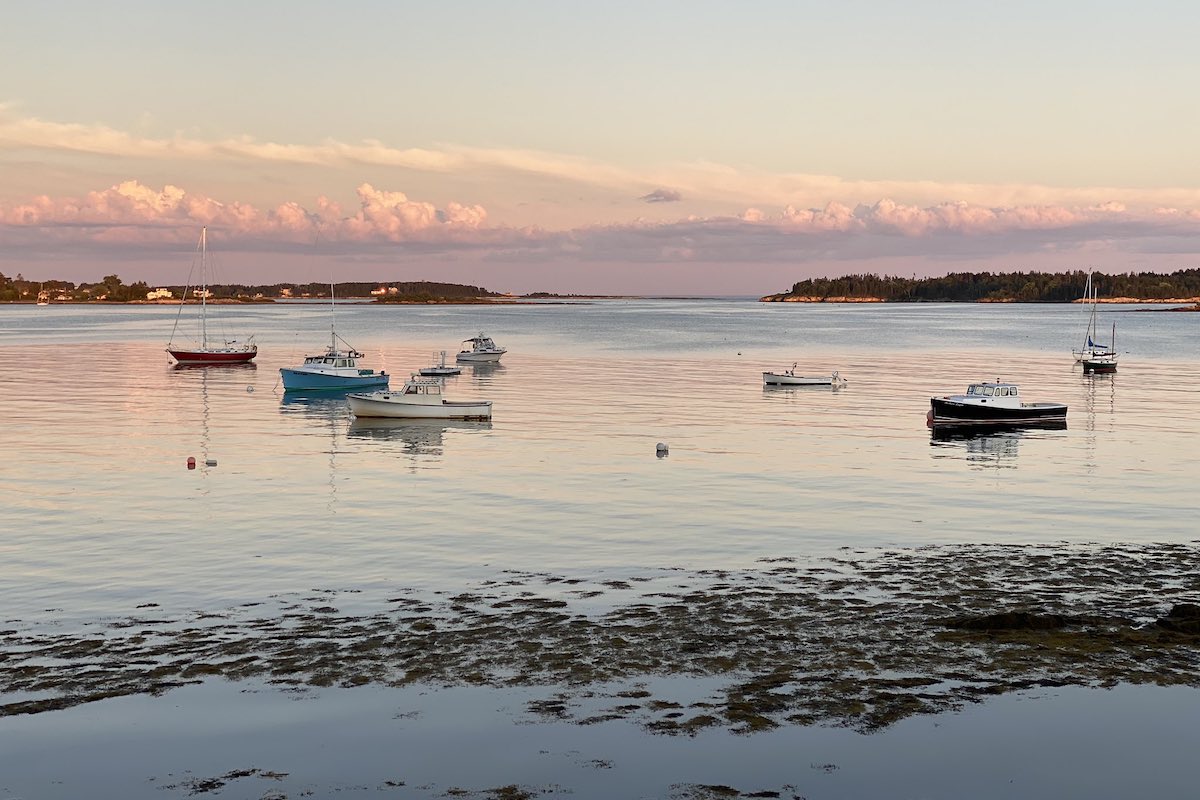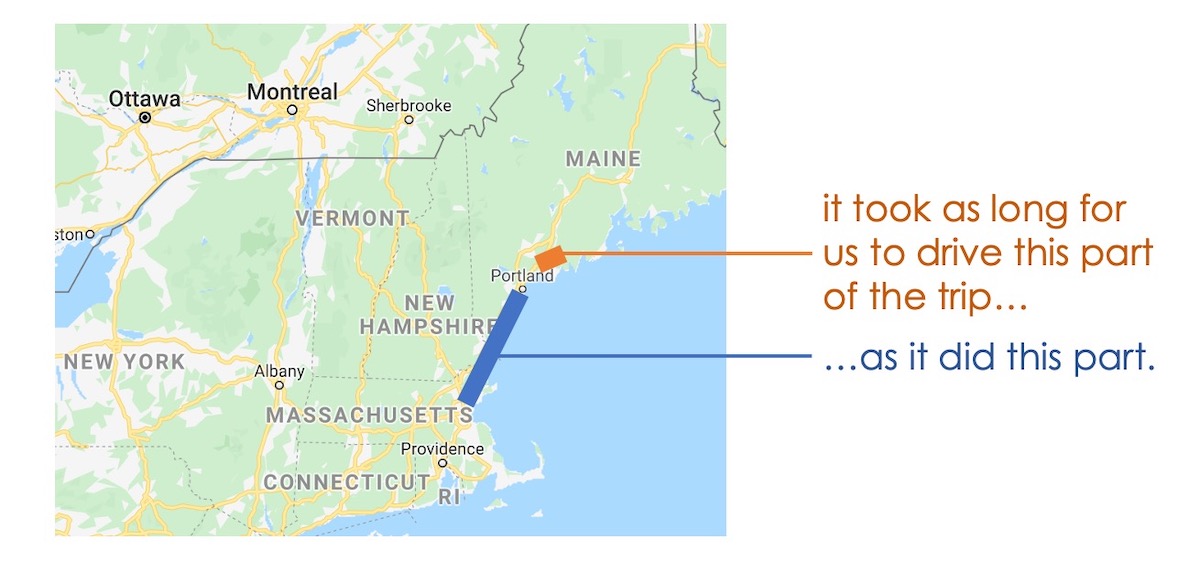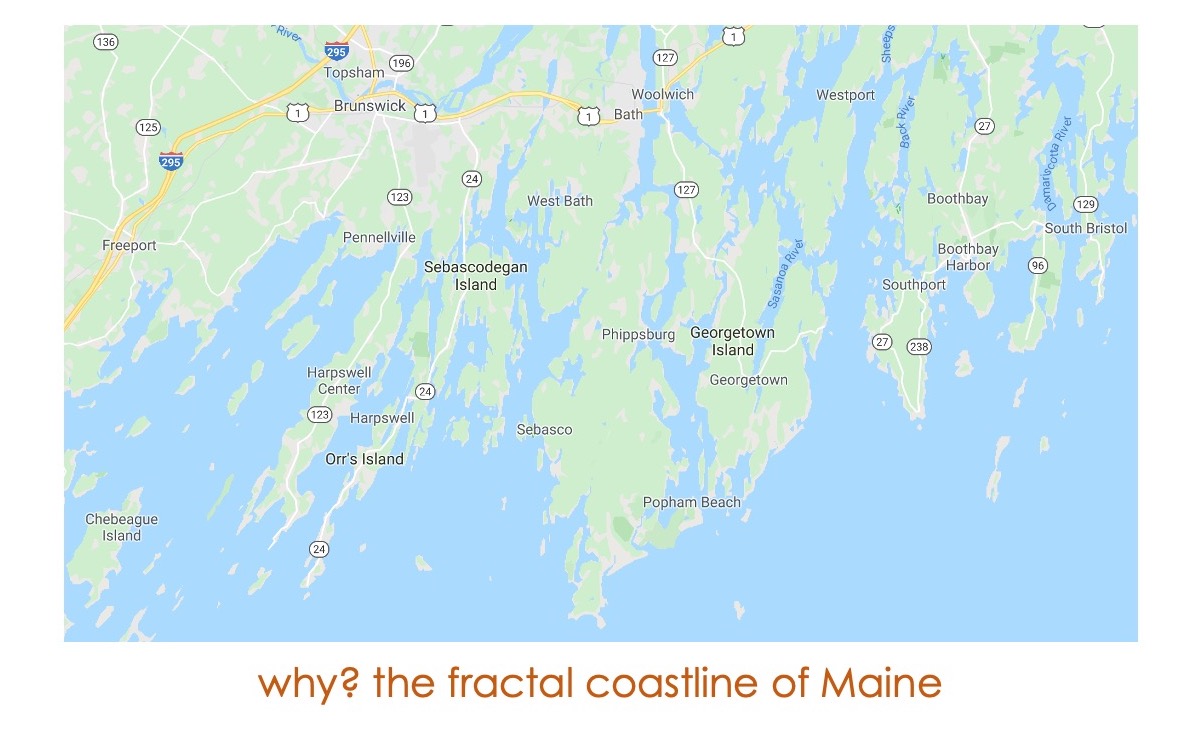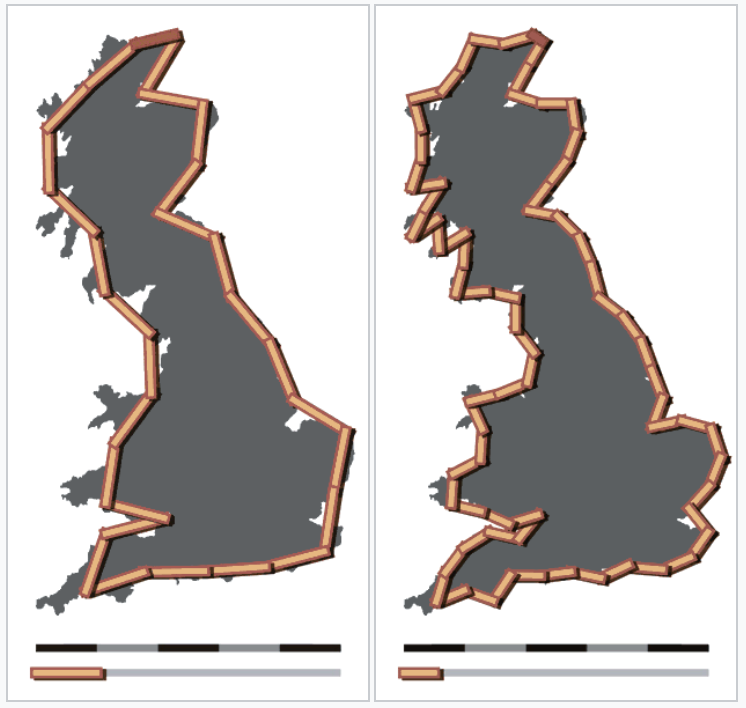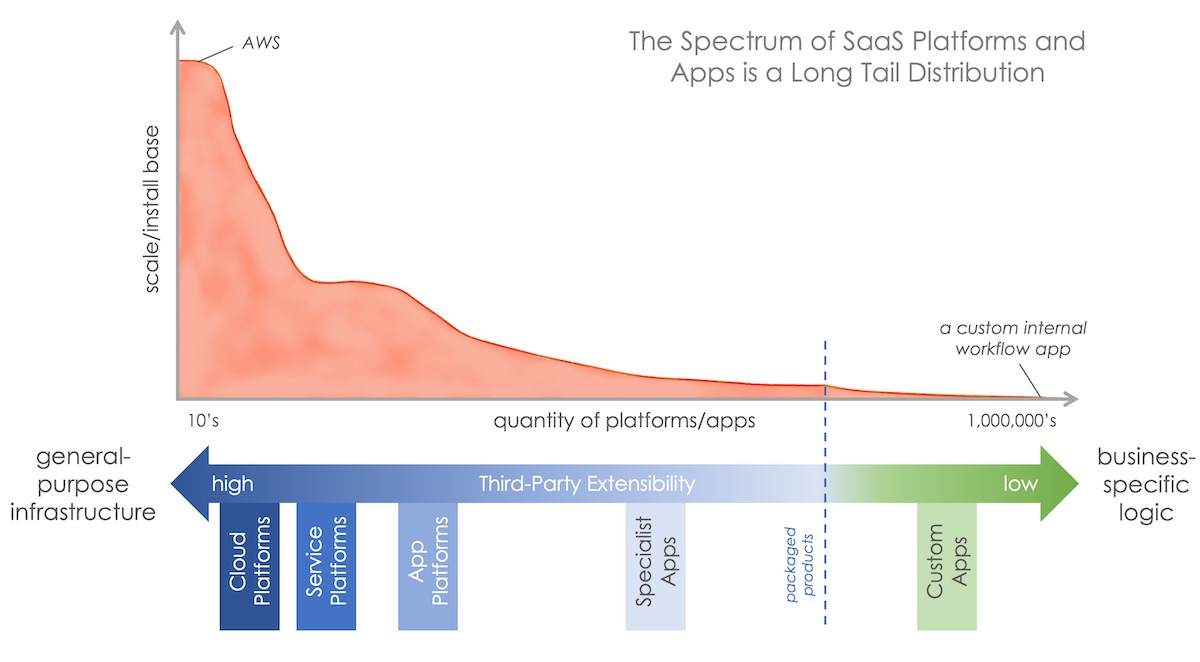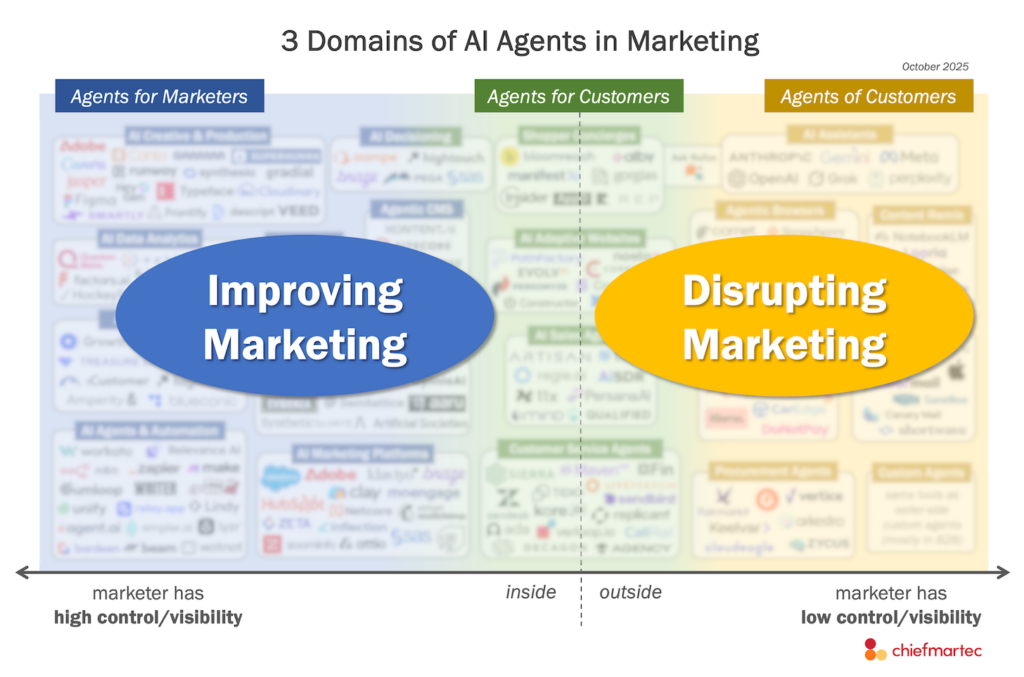After three and a half months of working out of my basement, I was in desperate need of a change of scenery. Preferably somewhere with a lot of outdoor space for hiking and frisbee throwing (a lost art!). No crowds. Lots of nature. Fresh air.
The answer? Renting a small cottage on the sparsely populated mid-coast of Maine. I took the photo above from our porch one evening. Definitely a way better view than my basement.
Now, it turns out that getting from Boston to one of the many forked peninsulas on the Maine coast is an interesting study in distance. From a high-level view in Google Maps, it looks like you’ve got to travel quite a ways from Boston to Portland, and then it’s just a short hop to a spot on the coast north of the city.
In actuality, that seemingly “short hop” from Portland takes almost as much time to traverse as the Boston-to-Portland leg of the trip. This is best explained visually:
It’s not just a matter of highways versus backroads. The distance you have to travel along the coast expands as you zoom into the map — or actually go to drive it. It’s not a straight line, but a zig-zaggy route. It gets more zig-zaggy as you seek to move closer to the edge between the land and the sea.
This is a phenomenon known as the coastline paradox: the length of a coastline grows as you use smaller, more precise units to measure it.
The classic example of this is measuring the coastline of Great Britain. If your units of measurement are 100 km chunks, then the coastline is approximately 2,800 km. If you measure it with 50 km chunks though, then the total length jumps to 3,400 km — 600 km longer.
As you use smaller units of measurement, you capture the subtle curvatures of the coast with ever greater precision. And that zig-zagging increases the length.
In theory, if you keep using smaller and smaller units, the length increases towards infinity. (This is a variation of Zeno’s paradox.) It’s a fractal. Indeed, Benoit Mandelbrot, the father of fractal geometry, published a paper in Science magazine on this very phenomenon in 1967, How Long Is the Coast of Britain? Statistical Self-Similarity and Fractional Dimension.
Of course, practically speaking, the limit of useful measurement stops far short of infinity. For driving the coast of Maine, it’s the miles of the road. The fractal, subatomic nooks and crannies of the water’s edge are irrelevant to how long it takes me to go from the cottage to the grocery store. (It just feels like an infinitely long trip, especially when I forget the butter and have to do it twice in one afternoon.)
However, if I’m walking my dog along the water’s edge, the richer close-up contour of the coastline is suddenly much more relevant. I want to peek into interesting tidal pools and carefully climb around slippery rocky outcroppings. For that more narrow and individual experience, more precise navigation of the fractal local landscape is meaningful.
So what does this have to do with software and martech?
I’d suggest that there’s an analogous “digital coastline paradox.” The real world is wondrously complex and subtle. And that’s true with the processes we use to do our work and engage with customers in a fractally diverse set of circumstances. As we strive to model and automate that complexity in the digital domain, the software we apply can get more and more specialized, addressing ever more niche use cases.
Of course, as with mapping a physical coastline, there’s a limit to the useful degree of precision and specialization. Moving customers along the journey from prospect to purchase has been sufficiently precise for most business when mapped in analogous “miles” instead “microns.” (Although microconversions are an example of the latter.)
But the evolving dynamics of software in the cloud are rapidly shifting the line of where app specialization is “useful” — i.e., economically attractive — for both commercialized apps and custom-built apps tailored to individual businesses.
The past decade of expansion of the martech landscape has been a concrete demonstration of this phenomenon.
To pick one example, I’m one of the many fans of Descript, a groovy app dedicated to amazing podcast production and editing. Sure, you could have used other less-specialized software for this task before (e.g., GarageBand). But Descript is so much better at this specialized mission.
You could say it “tracks the digital coastline” of podcast production much more tightly.
Want another example? I just got a demo yesterday from the team at Docket, which helps organize and run virtual meetings. It deeply integrates with Zoom (in fact, they won Zoom’s App Marketplace Competition back in May). It also deeply integrates with HubSpot (disclosure: I run HubSpot’s app partner program). Meeting agendas appear within the Zoom UI and all notes are automatically sync’d with contact records in HubSpot’s CRM. It’s slick.
Sure, you could have manually done this with Zoom and HubSpot before. But this integration makes the experience so much more efficient and delightful — and delivers increased value in the data captured and multi-party coordination it automates.
It “zooms in” — sorry — to the ever-more-interesting fractal digital coastline of collaboration.
I could give you thousands of examples just in martech. But you get the point. Maybe just to drive it home, let me share with you the incredible map of channel and partner relationship management software curated by Jay McBain of Forrester Research:
Jay identified 159 firms in this highly-specialized sector of marketing and sales management — and then subdivided them into seven even more specialized subcategories. Collectively, they represent a $2.1 billion addressable software market. Which to be honest, isn’t huge. In fact, that’s the point: most of these companies are relatively small. But their specialization is their strength.
The closer you look, the richer the contour of our digital coastline becomes.
And the examples I’ve shared are commercialized apps — people building a business around selling their app to others. The growing “no code” movement is empowering more and more non-technical individuals to build their own custom apps at a completely different scale. That engine of hyper-specialized app creation will bring a magnifying glass to every little section of the digital coastline.
IDC’s prediction of 500 million apps by 2023 isn’t as crazy as it sounds.
